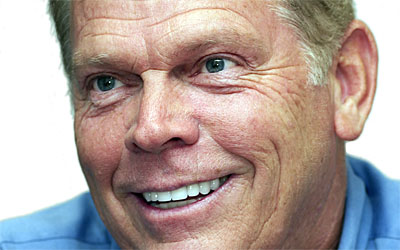
Woody Norris won the $500,000 Lemelson-MIT Prize for numerous important inventions, including HyperSonic Sound, which enables sound to be targeted to an individual listener.
"Woody Norris is a classic independent inventor. His curiosity is unbounded and spans many fields," said Merton Flemings, director of the Lemelson-MIT Program, which sponsors the annual award.
Norris, the son of a coal miner who had only a third grade education, grew up in a family that struggled to make ends meet. The family's only luxury was a radio, which at the age of eight Norris took apart to learn how it worked and produced sound. From that moment, he became captivated with electronics and made a hobby out of taking them apart.
More than 30 years after tinkering with the family's radio, Norris continues to be fascinated by how sound works. His HyperSonic Sound (HSS) invention is said to be the first big improvement in acoustics since the loudspeaker was invented 80 years ago. Norris first filed a patent for HSS in 1996 and received it three years later in 1999. In 2002, the first commercial version of the device became available.
According to Norris, improvements to sound projection were deemed too expensive and, therefore, not attempted. He overcame this challenge by applying a simple analogy to his work -- if televisions work by mixing three colors to make millions, could he mix sound frequencies to create crisp, clean sound that could travel farther?
HSS allows for ultrasonic waves to be created at more than 50,000 cycles per second, which keeps them in a focused beam and above the range of human hearing. As the ultrasonic waves mix in the air, the frequencies break down so they can be heard. By simply stepping into the beam, an individual can hear the sound as if it were generated inside his or her head.
"When Thomas Edison first invented the light bulb, it revolutionized what we saw. We quickly learned how to focus light, creating hundreds of applications including television, computers, movies -- many of the things we take for granted," Norris explains. "Turn on a loudspeaker and the sound goes everywhere; just like the first light bulb shed light everywhere. HSS is a way to target sound the way we focus light."
"Thousands of innovative ideas and products are pitched yearly to the automotive companies. Only a fraction ever make it to the serious stages of commercialization," said C.W. Edgar of Chrysler. "HyperSonic Sound technology invention was one of those once-in-a lifetime technologies. HSS has the ability to profoundly change the audio experience of the automotive occupant."
Norris finds inspiration everywhere he looks, and he passes that sense of inspiration on to students and other aspiring inventors. He plans to use the Lemelson-MIT Prize money to establish a foundation to help struggling independent inventors.
The $500,000 Lemelson-MIT Prize, the largest single cash prize for invention in the United States, is awarded to an individual who demonstrates remarkable inventiveness and creativity, and a proven commitment to inspiring others. A panel of scientists, technologists, engineers, and entrepreneurs selects the winner.